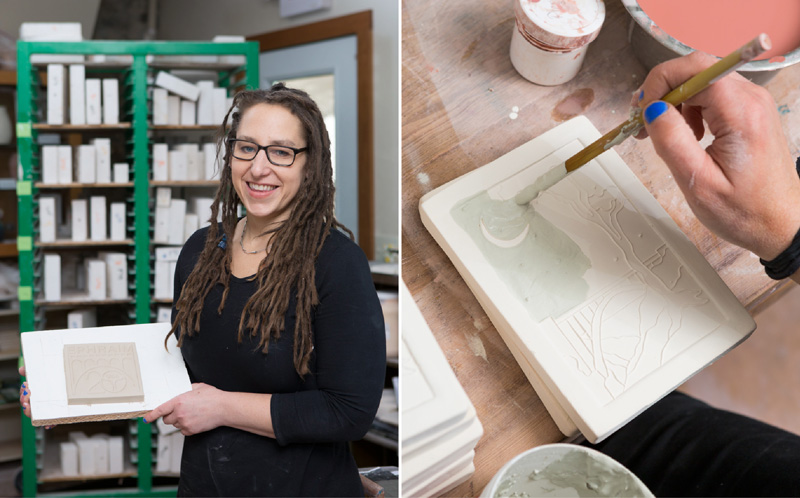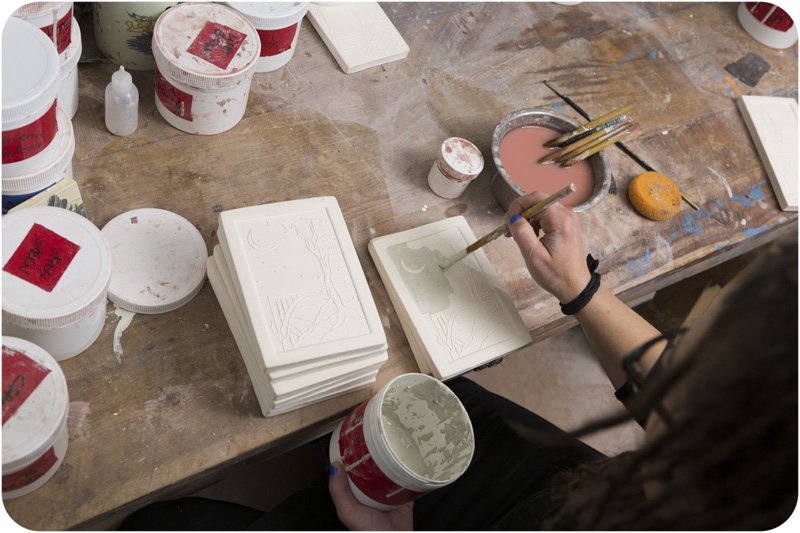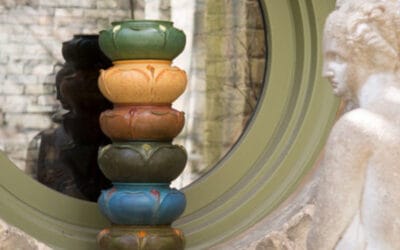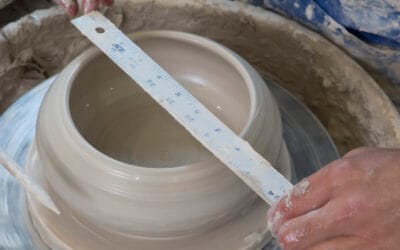Our tile is eclectic. Most EFP artists contribute to the development and production of tile designs and therefore we have many perspectives and styles encompassed in our tile line. Unlike most tile makers who must invest hours into making a tile mold and consequentially be highly committed to an idea from the beginning, we have a versatile, unique method which allows us to test many ideas before choosing the ones that we will refine for our catalog. Sometimes these more unusual tiles end up in our galleries as rare finds.
There are many art tile makers in the marketplace. What differentiates Ephraim’s tile?
Apart from the variety, our tile are very much handmade. We are not using the heavy ram presses or cnc machines to make perfect tiles and perfect molds. Imperfection is an intentional part of the charm of our tiles. They are heavily handled from pressing to cutting, finishing and glazing. You will often see finger prints impressed on the back of the clay from where they have been handled in the finishing process. We made a conscious decision a few years ago to make tile that is more art than tile. With this idea, we spend more time applying glazes in a painterly fashion, mixing colors on the tiles themselves as if they are canvases. We also now make frames for the tile. We like to see the framed piece as a discreet work of art. There simply is a lot of uniqueness to these tiles.
How do you categorize this art form?
Of course this is a form of ceramic art, but I think of it much like a hand pressed and hand colored wood cut or etching. There is some standardization in having the mold/plate, but overall the pressing and glazing techniques offer a lot of variation. I really enjoy this hybrid art form and I am so pleased when others appreciate it too.

20th Anniversary Spring Collection Snowdrop Tiles (retired) – in bisque (left) & with a the first glaze firing (right).





